|
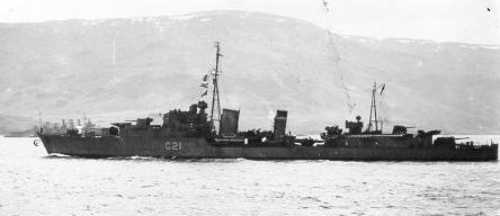
Built by Scotts Shipbuilding &
Engineering Co. (Greenock, Scotland). Keel was laid down on 1 October 1936
and she was launched on 18 December 1937. Commissioned on 28th March 1939
and was lost on 1 May 1942. 169 survivors. Member of the 6th Destroyer
Flotilla.
Pennant numbers: F 21
January 1939 - Autumn 1940 & G 21 Autumn 1940 -
May 1942.
Immediately at the outbreak of
World War 2, PUNJABI began to patrol the North Atlantic with the rest of the
6th Destroyer Flotilla. For the first three months, her duties consisted of
anti- submarine patrols and fleet screening duties all aggravated by
exposure to violent gales. During the Second Battle of Narvik on 13th April
1940, PUNJABI was badly damaged by six shells but was back in action an hour
later. Bigger action was to follow. On 21/22 May 1941, it was believed that
the German pocket battleship BISMARCK was ready to break out into the
Atlantic. Confirmation came through on 22nd May and the Home Fleet sailed at
2245. PUNJABI as part of that Fleet, was not to share in the final cornering
of BISMARCK. Two days of high speed search soon depleted the destroyers fuel
oil and by the 24/25th, all destroyers had to return to Hvalfiord Iceland to
refuel. Prior to the invasion of Russia by Germany, Force 'K' consisting of
PUNJABI, HMS AURORA, HMS NIGERIA and HMS TARTAR left Scapa Flow for
Spitsbergen with the intention of investigating that island's use as a naval
base. It was intended that the ships stationed here could strike against
German convoy traffic off Norway. Rear-Admiral Vian in NIGERIA layer
reported that a military occupation of Spitsbergen could be feasible but the
winter ice in the fiords would prohibit the island's use as an all-year
round naval base. After that mission, all of PUNJABI'S operations focused on
Russian convoys.
"The Sinking of HMS Punjabi"
by
Kenneth Tipper
On May 1st 1942 the Tribal Class Destroyer HMS Punjabi was part
of a screen of destroyers on the flanks of a line of capital ships that included
the battleship HMS King George V, the Carrier HMS Victorious, the battleship
USS. Washington, and the Cruisers USS. Wichita and USS. Tuscaloosa. The force was covering P.Q.15 on its way to Murmansk in Russia
with vital materials for our ally in the fight against the Nazi's. I was a
telegraphist aboard Punjabi, and my job was to intercept German Morse Code
signals on high-frequency direction finding equipment.
.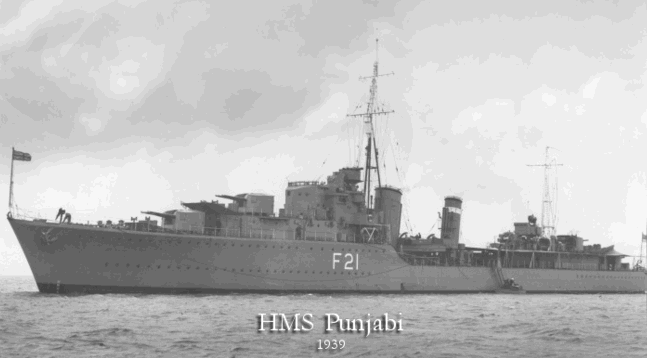
"HMS Punjabi" (Wright & Logan - Southsea)
We had left Iceland five days before and were in Arctic waters
when at 15:45 on May 1st a thick fog descended on the fleet. I was in the main
wireless cabin in the forward part of the ship, prior to relieving another
telegraphist in the cabin aft where we conducted our interception work. Suddenly
there was a tremendous crash, the Punjabi heeled over sharply on its side, and
all the lights went out. First thought was that we had been torpedoed, but our
nemesis turned out to be one of our own ships - the 34,000-ton battleship King
George V had rammed and cut in half our 1,850-ton destroyer.
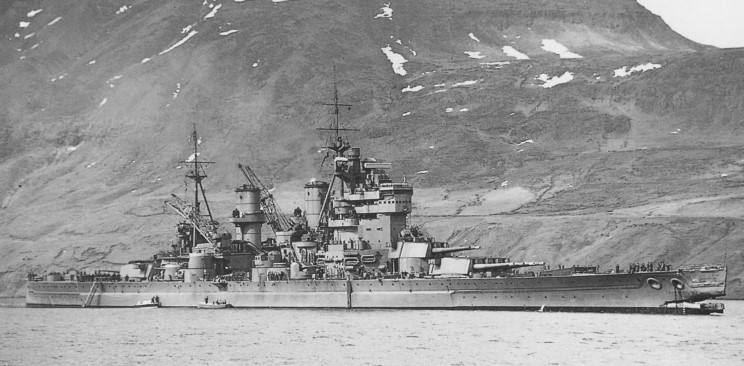
"HMS King George V", anchored in Seydisford, Iceland before
returning to Liverpool for repairs. May 1942
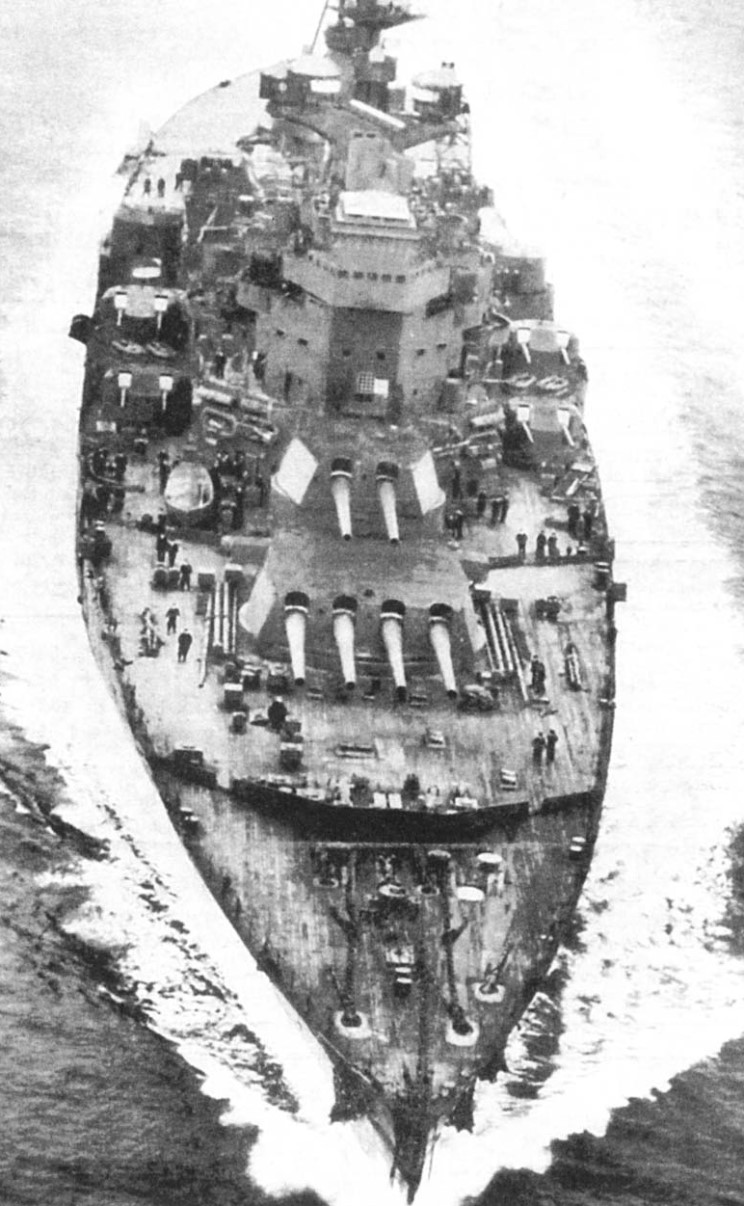
I made my way up on deck, and soon after we got the order to
abandon ship. Sliding down the sloping side of the forward part of the ship, I
got a liberal coating of fuel oil on entering the freezing water. No swimmer, I
looked around after coming to the surface, and was lucky to grab onto a Carley
Float nearby, hoisting myself onto the side where I sat in freezing water until
we were picked up by the destroyer HMS. Martin.
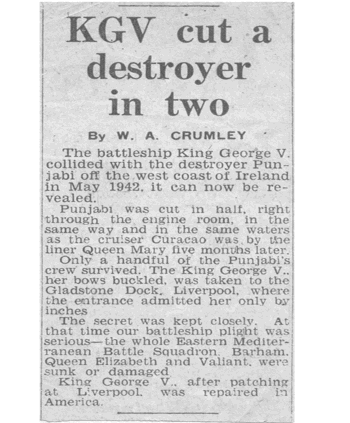
Press Cutting - Credit: Terry Hopkins (Ken Tipper points out
disaster was off Iceland, not Ireland)
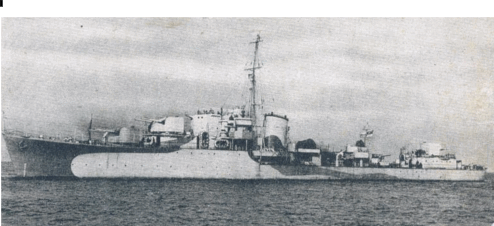
"HMS Martin"
As our stricken ship lay in two halves in the water, she was
narrowly missed both by the USS. Washington and HMS. Victorious. The Punjabi's
depth charges blew up as the stern sank, and the crew of the Washington felt the
concussion as they passed by. The incident was kept secret until the end of the
war, and a court of enquiry decided that Punjabi, in the fog, had turned across
the bows of the battleship after being told to alter course to avoid a floating
mine. Miraculously, only 49 of the Punjabi's crew were lost in what was one of
the most bizarre incidents in World War 2. There were 201 survivors, who, in
another twist of fate, were transferred to the battleship that sank their ship,
in Iceland for the return trip to Scapa Flow, the Home Fleet anchorage in the
Orkney and Shetland Islands. The King George V, with a huge gash in her bows,
needed to return to Liverpool for repairs.
HMS Punjabi ---HMS
King George V
Fate was not yet done with me, for while on deck of the King
George V on the trip to Scapa Flow, I saw a member of the battleships crew
emerging from a hatchway. He looked strangely familiar, and it took a while for
he and I to recover from the shock of seeing each in such strange circumstances.
We had last seen each other in the newspaper office where we both worked before
joining the Navy. Our desks had almost adjoined each other in the Birmingham
Gazette reading room.
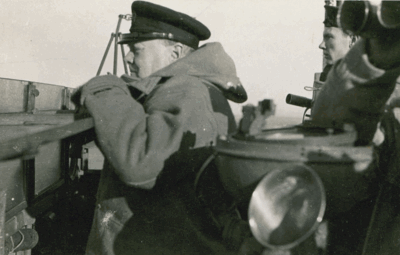
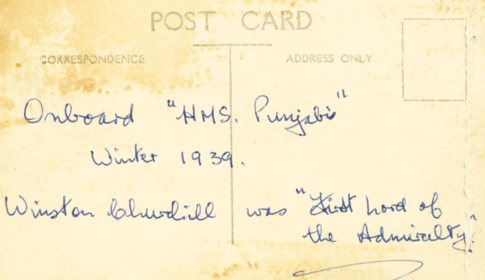
Winston Churchill on the Bridge of HMS Punjabi 1939 - John
Sully (Signalman behind), this picture appeared in the British press and John
Sully's Father spotted it. - (Credit - Terry Hopkins)
After Punjabi, I was sent to another destroyer, HMS Quorn, based
in Harwich and doing convoy escort duty around the coast of Britain. We also
took part in the sinking of a German armed merchant raider off the French coast.
The Quorn was sunk soon after D Day and I learned that all the telegraphists
were killed. Fortunately for me, I had been in Colombo, Ceylon (Sri-Lanka now)
for 18 months intercepting Japanese radio signals.
Fate still had not done with me though. We had emigrated to
Florida in 1957 and in July 1973, I was reading the Sunday paper in my home in
Pompano Beach when I saw an article about the reunion of the crew of the USS
Washington taking place in Fort Lauderdale. I called the hotel where the reunion
was to be held and spoke to the organizer, who asked me to join them for what
turned out to be quite a memorable meeting with the guys who had last seen my
ship in the Arctic Ocean, in two halves as they narrowly avoided hitting us.
Later, I attended their reunion at the Naval Academy in Annapolis, Maryland, and
in June 1989, at their reunion in Reno, Nevada I was made an honorary member of
their association.
It's been more than 62years since that fateful day in May 1942,
but I still recall the two telegraphists who lost their lives, one of them who I
was due to relieve in just 15 minutes to stand the first dog watch. Very
recently I have received a medal from the Russian Government for taking part in
the "Russian Convoys".
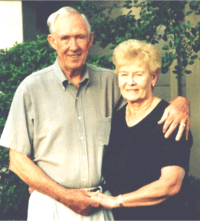
"Home" is in Florida.
I am now 83, father of two, grandfather of five, and great
grandfather of four, with my wife of 58 years to share our memories.
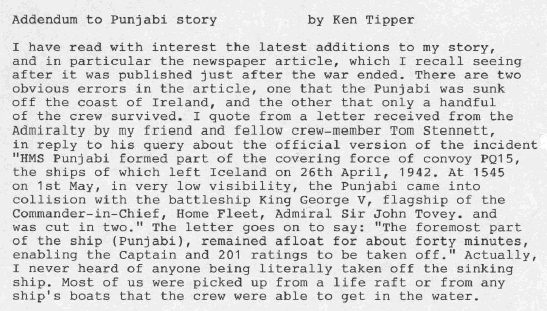
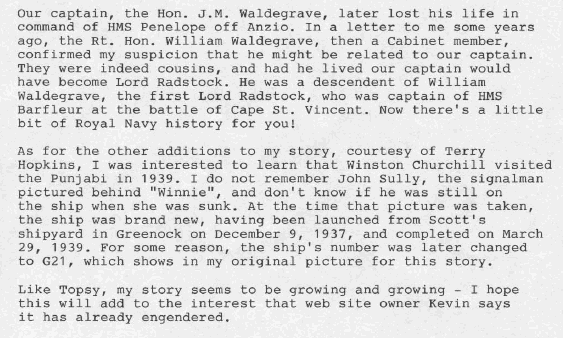
|